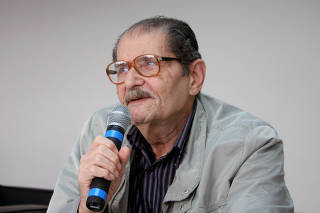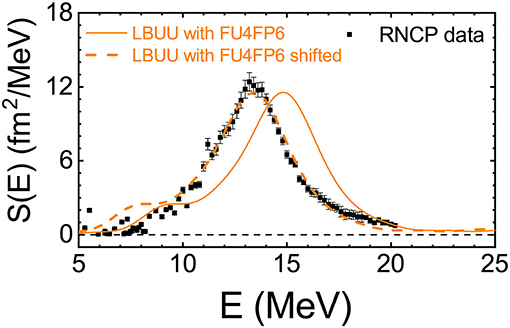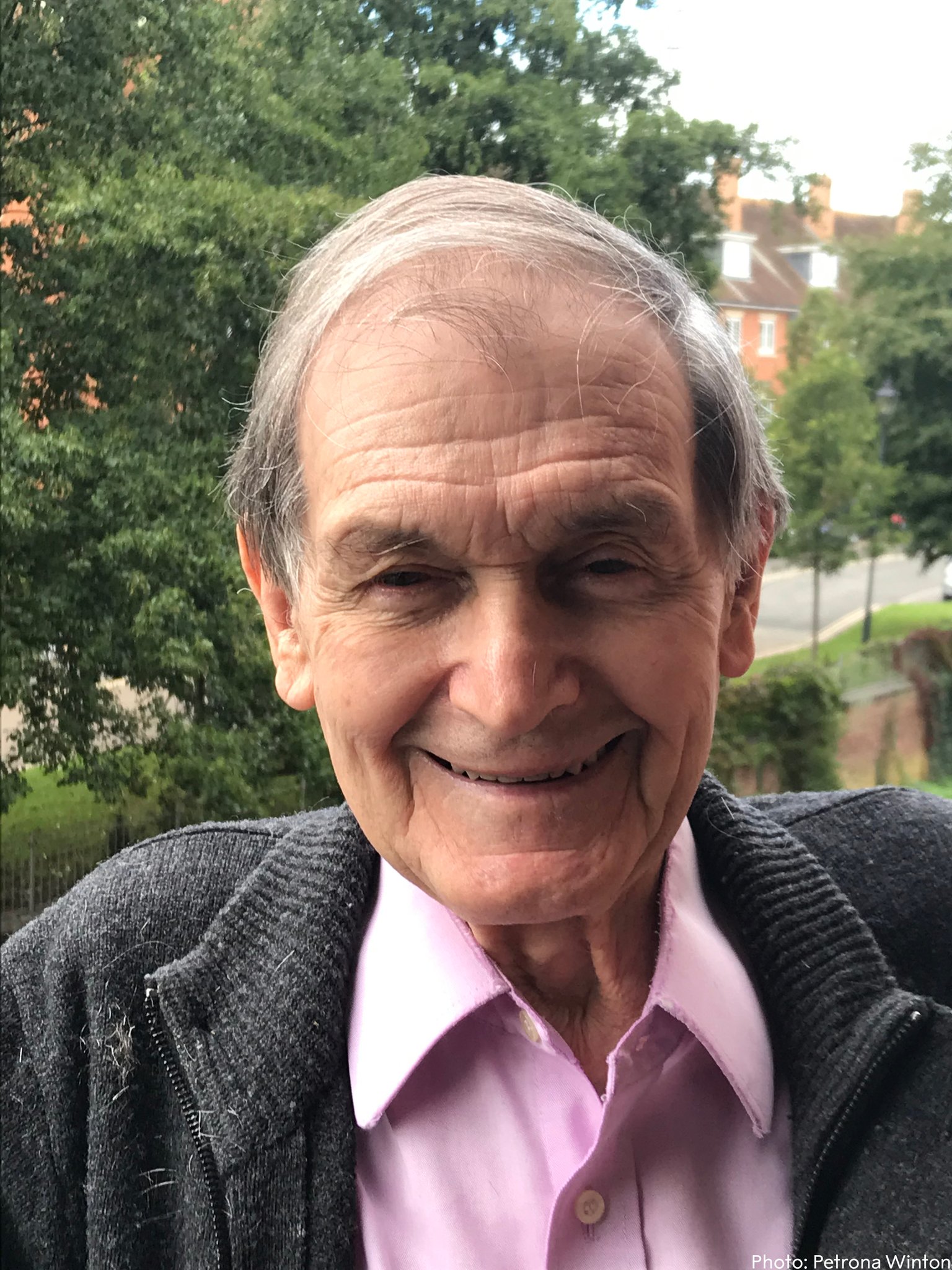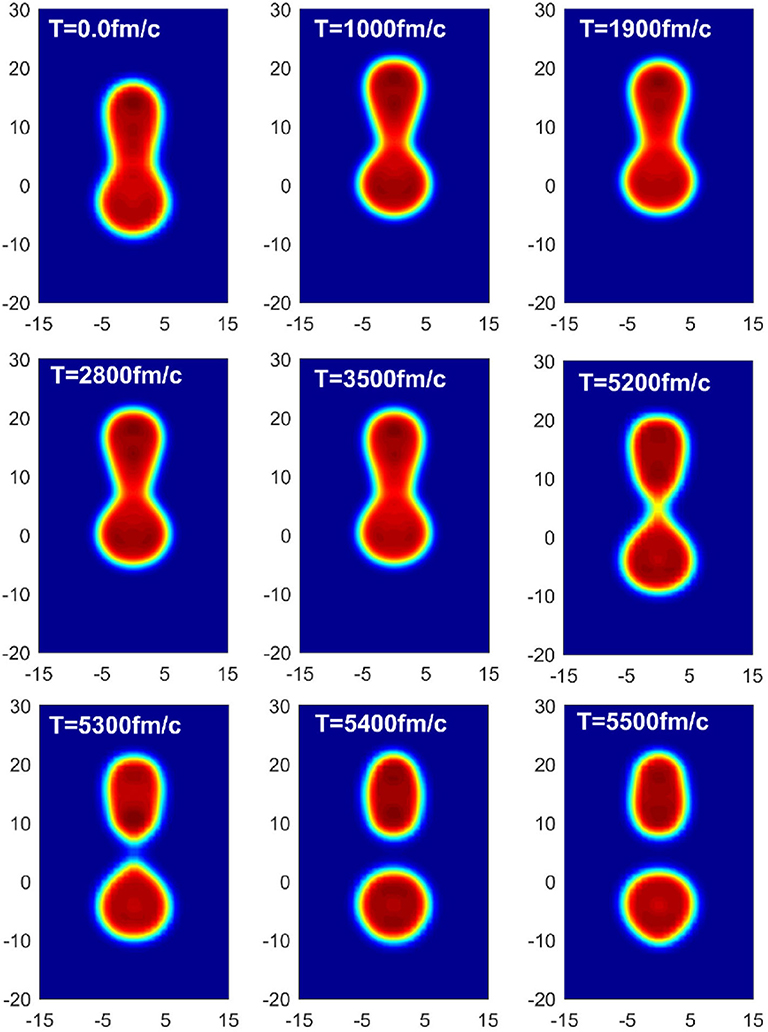I wonder if readers have noticed the similarity between footballer & sex-symbol George Best and nuclear wunderkind and Nature-botherer Liam Gaffney?
All about nuclear physics - research, news and comment. The author is Prof Paul Stevenson - a researcher in nuclear physics in the UK. Sometimes the posts are a little tangential to nuclear physics.
Thursday, 17 December 2020
Thursday, 10 December 2020
Bell Burnell Diversity PhD studentship at Surrey
My department are offering a fully-funded PhD studentship to candidates from under-represented groups. It is loosely tied to the IoP Bell Burnell Scholarship, and we would seek to submit an application to the IoP for the successful candidate, though the university guarantees funding even if the IoP bid is unsuccessful
More details are here.
I did post this on Twitter already, trying to see if anyone there might be interested in applying for the studentship with me. I got one angry (or "disgusted") respondent who does not like this kind of scheme. The point is that the word "under-represented" means less represented than you would expect if there were not a long-standing systemic bias against particular classes of people. Those who don't fall in the "under-represented" category already have plenty of opportunity to get into they system, as seen by their over-representation.
This studentship is unusual (compared with any other studentships that have been used to fund students I've taken in the past) in that it even international students are eligible, which is usually not the case for government-funded places.
Thursday, 26 November 2020
A proper Zoom backdrop, finally
We have been having some work done at home, to have our loft changed into a bedroom and an office for home working. We have had a bookshelf built in to one of the rooms, and it has just been populated by books, so finally I can take a photo and have proper background to my Zoom calls, which I understand is supposed to be a full bookcase
Wednesday, 4 November 2020
Online teaching & Maple Calculator
It's the middle of the semester, and it's my busiest semester, in which I teach two full 15-credit final year modules – i.e. I am teaching half of a student's full time effort, and with the extra preparation of online lectures, online tutorials, videos of answers to problems, more time on online discussion, as well as all the non-teaching parts of my job, I am finding myself working after the family has gone to bed most days. Not a position I ever try to get myself in, but I'm more or less resigned to it for the rest of semester.
For most of my lectures and problem solution walk-throughs I'm using a video of me writing on a tablet device, accompanied by my voice. It works tolerably well, though not without glitches. I'm getting increasing adept at re-opening the whiteboard app when part of my writing hand accidently touches a part of the screen and closes it. At the same time, my usage of mild swear words has never been higher, and no doubt the students will also be saying crivvens whenever they need to express some slight horror.
Some of the problem solutions I've been working through involve sticking in actual real-life numbers into calcualtions. These are calculations a bit too complicated to do mentally, and I rarely find myself in need of doing such calcualtions so that I don't have an old-fashioned calculator to hand. I have, of course, a computer, and also a smart phone, and usually I end up using the calcualtor function on my smart phone. As I wrote an equation on my tablet a couple of weeks ago, I did find myself musing that it would be nice if there were an app to recognise the equation and do the sums for you. Lo and behold, of course there is. One of the courses I am teaching right now involves the use of the programming language Maple and there is a app written by the Maple people called Maple Calculator. It has exactly this function; you can take a picture of some mathematics with a camera, it will recognise it (hopefully) and then evaluate it for you.
Here is an example of it working out a calculation for a kinematics problem in special relativity:
I tried to make sure that I wrote the equation very neatly, and indeed it seemed to recognise it okay. The answer, though, is not what I was expecting. The actual answer is around 1.73. It took me a little while to understand why...
Monday, 19 October 2020
Open Access Royal Society (one week only)
While we wait for all academic publishing to be properly open access, Royal Society Publishing have kindly opened up their pretty extensive archive for free for the next week. See here.
They do not have an extensive amount of nuclear physics stuff, but they are currently my publishing BFF because they published my student's article on Terrell rotations earlier this year, whcih I may have metioned here before. More than once. In fact, more than twice. Well, modesty prohibits me from linking to the paper again, but that's okay because there are lots of other articles of interest, dating back, of course, many centuties.
If anyone has any favourite articles from Proceedings of the Royal Society, or the Philosophical Transactions, please do share in the comments.
Here's a snapshot of some sketches by William Herschel, from Philosophical Transactions, vol 74, p233 (1784)
Tuesday, 6 October 2020
Lattice calculations of nuclear vibrations
That leaves just one more paper to appear, and also means that I should get on with writing the editorial in time to make a free e-book of the Special Topic.
Roger Penrose, Nobel Laureate 2020
Roger Penrose was announced this morning as the winner of half of the 2020 Nobel Prize in Physics, with the other half being shared equally between Andrea Ghez and Reinhard Genzel. I will leave others to explain about the physics behind the prize award, since it is not really my area of expertise, but I wanted to post to mention the ways Penrose and his work has cropped up in my life
As a physics-interested schoolboy, I used to read through popular science books. Probably the first one I read, to the best of my memory, was Stephen Hawking's A Brief History of Time, which I got for Christmas the year it came out and was something of a must-read book for more or less anyone, though there was a kind of joke that few people finished it. I did finish it, and though I probably didn't understand it all, I found it at least readable and understood the words and got a sense always of the ideas being communicated, even if perhaps I didn't always gain a deep understanding.
Another one I read, while I was in the lower sixth (what we used to call Year 12) and applying to University, was Penrose's The Emperor's New Mind. I lent my copy to a girl I fancied and never got it back. I later learned that the rule of lending books to anyone was that you just go out and buy yourself another copy straight away. Anyway, I had finished the book, though I'm not sure I can remember too much of it in great detail now. It did make quite an impression on me at the time, though I think it was "harder" than Stephen Hawking's book and no doubt there was lots I didn't understand. I liked it for its broad sweep, combining ideas from physics to advanced mathematics, Turing machines, and on to somewhat more speculative stuff (which I didn't distinguish at the time, I suppose) to do with consciousness.
In December of 1991, when I was in the lower sixth and up in Oxford for an interview to read Physics and Philosophy I noticed that Penrose was giving a lecture for prospective students in Mathematics. In my interview for my place in college when asked if I had any questions I said I'd seen the advert for the talk and I asked if it would be okay if I went along to it. I'm not sure what they thought of my question - I guess I had no idea at the time that it would be perfectly fine for anyone to turn up and they wouldn't exactly be checking to see if I was really a prospective mathematics student. Anyway, I went along, and enjoyed the talk very much. Penrose talked about the famous Penrose tiles. I remember particularly a demonstration of how for certain near-symmetries you could make the symmetry almost perfect - as near to perfect as you liked, except not quite actual perfection - and he showed this by having two identical overhead projector slides with a 5-fold Penrose tiling, which he overlaid, and you could see the bands made in the thin regions where the pattern didn't quite repeat.
I don't think I have seen Penrose in person since then, 29 years ago, but I did get a copy of his huge "The Road To Reality" book as a 30th birthday present a bit later (in 2004). That's been sitting on my office shelves unread, I have to admit. I'm sure, as a practicing theoretical physicist, that I ought to be able to read and understand it, but even to me, opening it up it does look intimidating.
The other Penrose anecdote I have is that I found out at some point (perhaps the advent of wikipedia) that I share a birthday with several famous physicists, two of whom won Nobel prizes long ago). Now I can fill in another cell in this table:
| Physicist | Date of Birth | Year of Nobel Prize |
| E.O. Lawrence | 08/08/1901 | 1939 |
| P.A.M. Dirac | 08/08/1902 | 1933 |
| R. Penrose | 08/08/1931 | 2020 |
| P. D. Stevenson (me!) | 08/08/1974 | - |
The final Penrose-related thing links with my research: Earlier this year I co-published a paper with a bachelor's student based on his Final Year Project on the visual appearance of objects moving very fast (at an appreciable fraction of the speed of light). This is a new look at something which are either called Terrell Rotations, after the author who first got his name attached to it, or as the Penrose-Terrell effect, since Penrose independently submitted a paper on the same topic, published in the same year as Terrell. Even more properly, it can be called the Lampa-Terrell-Penrose effect, since Lampa published it first, in a paper that wasn't so widely known.
Here's a picture of Penrose, which he sent to the Nobel Committee from his house in Oxford this morning
Wednesday, 23 September 2020
Science books of the year
I saw yesterday that the Royal Society published their shortlist for their science books of the year. There are 6 in the shortlist: The World According to Physics by Jim Al-Khalili, The Body by Bill Bryson, The Great Pretender by Susannah Cahalan, Explaining Humans by Camilla Peng, The Double X Economy by Linda Scott, and Transcendence by Gaia Vince.
Unusually, since I don't read a lot of popular science, I've actually read two of the books: Transcendence and The World According to Physics. They are both excellent, and would be worthy winners. I got Transcendence for Christmas last year, and found its arguments compelling that humans' achievements are part and parcel of the way humans work together; the network of ideas, activities, language and culture evolve together with biological humans and have created a kind of super-organism. Mind-blowing, well-researched and full of interesting anecdotes, I found myself wanting to tell people things I'd read in it as I was going through.
The World According to Physics is right up my own subject area, so though I would expect to enjoy it, I wouldn't necesasrily prioritise adding a popular explanation of something I think I know well to my reading list, but I'm glad I did read it: Sure, I knew most of the stuff already, but it was infused with such a joy for the wonder of the Universe, and our way of explaining it through physics, that I rekindled my own sense of awe at what I sometimes let lapse as part of my day-to-day activities. I did even learn a few things, thanks to the inclusion of lots of very up-to-date and speculative ideas (which were flagged as such). I should add that I read a draft of the book and gave some comments, and the author did hand me a copy once it was published. Jim is my colleague at the Unviersity of Surrey. No payment was received for this review ;-)
Wednesday, 16 September 2020
arxiv-vanity
The document format pdf is pretty good when you want to make nice-looking output for printing for your scientific paper. It's not always so handy when you want to read something on e.g. your phone screen, though, where you have to do a combination of zooming in and scrolling around to be able to read a paper.
A nicely-formated html version of a scientific paper, on the other hand, should be able to render nicely on a wider range of screens, and these days reading from screen has largely superseded reading from paper for me. I read on Twitter about an arxiv-to-html translator called arxiv-vanity. You give it an arxiv URL and it returns a nice readble web-page version of the paper you are interested in.
I tried it on the recent whitepaper / review I was involved in writing on fission theory and the results are impressive. Perhaps arxiv will fold it into its own offering soon.
Friday, 11 September 2020
Update on the time-dependent methods special topic
I last posted an update back in June about the Special Topic in Frontiers in Physics that I am co-editing. Then, a new article on solitons in nuclear reactions had just been published. This was actually followed a few days later with another paper, and then there has been a fallow period while the last few papers go through refereing, proofing, and publication. Today, the next of those was published. so let me briefly mention the two new papers since June:
Marc Verriere and David Regnier have written a review on the time-dependent Generator Coordinate Method. In fact, they discuss a number of related models which all share the character of mixing multiple Slater determinant wave functions to represent complex nuclear phenomena (reactions, fission) in which there is a significan change over time of the quantum state, and for which a time-dependent method is appropriate. It's a nice contribution the Special Topic, covering one of the current hot methods in nuclear theory. I can say this since I have a PhD student working on something that can be termed time-dependent Generator Coordinate Method, though it is not quite the same as the methods presented by Verriere and Regnier.
The other paper, published today, is written by a University of Surrey undergradute student who took a year-long research placement at Peking University in Beijing, China. He used time-depedent Hartree-Fock (TDHF) to look at the part of the fission pathway near scission where the TDHF method is applicable, and to study how different parameterisation of the nuclear force give different predictions for the pathway to fission. It's a short piece of original research, which complements nicely the mix of other research and review articles in the Special Topic. I worked on this project with Marko and his host supervisor, and am co-author on the paper. I took the liberty of using a picture from this paper as an accompaniment to this blog post.
Once the two remamining papers appear, on spontaneous fission and collective dynamics with a transport model, have appeared, the whole Special Topic will be avaiable as a free e-book, in pdf and epub format, so get your Kindles ready.
Friday, 7 August 2020
Deep Summer in Bishop's Stortford
It's a strange time right now, of course, with the Covid-19 pandemic ongoing. I've been taking summer holiday in the form of working a couple of days per week and having more days off than on. This week, I'm on holiday, and we have made a trip to visit my parents, following both our households isolating for an extended period. I don't have a car, which is usually no problem, but we didn't fancy travelling by public transport right now, and fortunately my parents came to pick us up and bring us all up to their house, while my mother-in-law lent us her car, too, so that we could have the two-cars needed for the 6 of us.
So ... we have been carrying on the lifestyle of staying in and isolating from other people with the exception of my parents, at their house. It's nice spending so much time with them. They've lived in this house for more than twenty years, and this two-week visit is the longest time I have continuously been here. With 4 kids to play with and look after, there is no shortage of things to do, and my parents have (unlike us at home) subscriptions to the likes of Disney+ and Netflix.
While I've been working just enough to keep up with MSc, PhD and undergraduate summer project students, a paper I worked on as part of a large supergroup of theorists to map out the next steps in understanding nuclear fission from a microscopic point of view was published. It's a comprehensive (86 page!) paper bringing together expertise from a lot of different people to try to figure out how to move towards a unified theory of fission, a process which consists of many stages, operating a different timescales, with different degrees of freedom coming into play; this calls out for a different range of approximations for each stage, and an understanding of how to link them together ideally with a single framework. The paper is an attempt to put down all our ideas on how to proceed here. I contributed what I could to those parts I felt sufficiently expert in, and the whole paper was put together by Prof Dobaczewski from the University of York. It's available now, via its doi: 10.1088/1361-6471/abab4f, though it has not yet been assigned a page or article number. Because there are UK-based co-authors, it is fully open-access, as is the case with all J Phys G papers with UK authors.
At the top is a picture of me photobombing my 8 month old son Kit, outside at my parents' house.
Tuesday, 21 July 2020
A paper in IoP SciNotes on generating ion-ion potentials
Thursday, 2 July 2020
Margaret Burbridge Symposium
Dear Colleagues, Please join us on July 8th 2020 from 1:00-3:00 EDT for an online symposium to honor the late pioneer Eleanor Margaret Burbidge. The event will celebrate her life and science through short talks from her colleagues and collaborators as well as researchers who have benefited from her trailblazing and scientific insights. Speakers include: George Fuller - University California, San Diego Anneila Sargent - California Institute of Technology Virginia Trimble - University California, Irvine Fred Hamann - University California, Riverside Vesa Junkkarinen - University California, San Diego Amanda Karakas - Monash University Artemis Spyrou - Michigan State University Anna Frebel - Massachusetts Institute of Technology Nicole Vassh - University of Notre Dame The JINA-CEE website https://www.jinaweb.org/events/celebration-margaret-burbidge can be consulted for any updates and viewing a commissioned illustration. We encourage you to please share this email invitation with any colleagues, friends, or institutions that might be interested as the event is open to all. We hope to see you there, The Organizing Committee: Frank Timmes, Arizona State University Nicole Vassh, University of Notre Dame
Tuesday, 30 June 2020
Nuclear soliton review
One particular confounding factor with the existence of solitons in nuclear reactions is the relative speed of the waves which equilibrate the charge and those which move matter. If neutrons and protons are exchanged too quickly in reactions, then solitons are not possible. This is something highlighted in Iwata's previous papers, and a hot topic in understanding heavy-ion reactions, with a recent paper in Physical Review Letters studying the same thing from a more nuclear physics (rather than mathematical/solitonic) perspective.
Monday, 15 June 2020
The Surrey Alumnus and The Spy
Though I was an undergraduate at an Oxford college, I was never recruited as a spy, and if anyone tried, I totally misread it. Now I have been at the University of Surrey for 20 years, it turns out that one of the ex-undergraduates here, from the earliest days of the University in the late '60s became a spy. Michael John Smith studied electronic engineering at Surrey, and came to MI5s attention as someone who got involved in the activities of the Communist Party of Great Britain (CPGP). He worked, after graduation, as an electronic engineer at EMI where he had clearance to work on technology contracts for Britain's nuclear bomb. Apparently his security clearance was granted thanks to a mix-up in his rather common name, and the fact that there was another Michael John Smith enrolled in the Surrey branch of the CPGB. He duly worked on radar fuses for Britain's free-falling nuclear bomb, and was able to pass documents on to the KGB. Eventually, the clerical error at the security service was spotted, and his clearance was revoked. His Soviet handlers had made sure he stopped taking the Morning Star, and switch to the Telegraph, join a local tennis club, and stop association with the CPGB; still, they were suspicious that so soon after this preparation he was able to pass them such secrets, and they thought that the information about the radar-activated fuses, complete with details of the frequency used, and hence how to jam them, might have been fake plants from the British. Not so.
Tuesday, 9 June 2020
Cycling near the speed of light in Nature
Friday, 5 June 2020
A paper on relativity, and a book on instantons: The week in Lockdown Guildford.
Thursday, 21 May 2020
A master list of research seminars
Sunday, 10 May 2020
David Rowe 1936 – 2020
David was British-Canadian, with dual nationality, following moving to Canada after study at Cambridge and Oxford, and a research position at the UKAEA with Tony Lane. He spent the bulk of his career at the University of Toronto and though he retired in 1998, his interest and activities in nuclear theory did not wane. Indeed, he published a paper in this month's edition of Physical Review C (on a quantized algebraic version of the Bohr-Mottelson Unified Model)
Friday, 1 May 2020
Nuclear Physics Meetings in 2021
18/07–23/07: 14th Nucleus-Nucleus Collisions Conference, Whistler BC, Canada
A conference on collisions between nuclei at a wide range of energies, from superheavy-element fusion to quark-gluon plasma. I have never been to one of these, but I'm certainly interested in this area, particularly in heavy-ion reactions around the fusion barrier. I dare say Whistler is a nice place to visit. [website]
Thursday, 30 April 2020
New Royal Society Fellows
Tuesday, 21 April 2020
UK Lockdown seminars
Wednesday, 8 April 2020
HIAS Proceedings Online
Thursday, 2 April 2020
A rare pair of mirror nuclei
Wednesday, 1 April 2020
My first remote PAC
Tuesday, 31 March 2020
Online seminars during the coronavirus epidemic
The nuclear reaction theory community has started a series of seminars, detailed on https://reactionseminar.github.io. I wasn't aware of it when the first seminar was given, but I plan to attend future seminars. One will be given by my Surrey colleague Natasha Timofeyuk. I'm not aware of a similar initiative by the nuclear structure theory community (structure + reactions is a traditional way of dividing up low-energy theoretical nuclear physics, though I sit in both camps). I would certainly join one if it started, though I'm not quite keen enough to start such a project by myself.
Monday, 30 March 2020
Li-6 as a probe of giant monopole resonances
Monday, 23 March 2020
Working from home
• Turn on proxy browsing in your Firefox by clicking on the icon that's been added to the toolbar. It should look like this:
when it is active.
When you are done, you can quit the ssh command with ctrl-c and switch the proxy back to the off position.
Friday, 20 March 2020
Coronavirus 20th March
Thursday, 19 March 2020
Nuclear Fission Dynamics in our Frontiers special topic
Sunday, 15 March 2020
Coronavirus 15th March
Friday, 13 March 2020
Affected by Coronavirus
Had the coronavirus pandemic not come about, I would have just return a couple of days ago from a meeting in Beijing, but that was cancelled several weeks ago. Yesterday the Institute of Physics announced the cancellation of all their meetings coming up, which includes the annual Nuclear Physics Conference which they sponsor. I was due to talk in that, but it's not going ahead. Before that, is a meeting in Jyväskylä, Finland, which is now almost certain to be changed in some way (cancelled, moved, or performed online). It's all rather dramatic. But of course, these small aspects of my work are nothing compared with the consequences of the disease.
Friday, 28 February 2020
Next papers in our Frontiers In Physics Special Topic
 Wang) or they might stick together without really fusing to an equilibriated compound nucleus and split apart into two fission fragments from a kind of molecular state. This is quasifission and is discussed here for the purposes of understanding it as a kind of hindrance to forming new superheavy nuclei. The authors show how to identify quasifission in mass-angle distribution measurements and map out the landscape of the briefly-made (super)heavy system, as shown in the figure showing how the entrance and exit channels are constituted in terms of the shapes of the combined system.
Wang) or they might stick together without really fusing to an equilibriated compound nucleus and split apart into two fission fragments from a kind of molecular state. This is quasifission and is discussed here for the purposes of understanding it as a kind of hindrance to forming new superheavy nuclei. The authors show how to identify quasifission in mass-angle distribution measurements and map out the landscape of the briefly-made (super)heavy system, as shown in the figure showing how the entrance and exit channels are constituted in terms of the shapes of the combined system.Thursday, 27 February 2020
Acceleration is a vector
Tuesday, 25 February 2020
Mahir Hussein memorial workshop

Workshop details are here. I've added it to my 2020 list of conferences and workshops.














_1.jpg/1200px-Imperial_War_Museum_North_-_WE_177_British_nuclear_bomb_(training_example)_1.jpg)





















